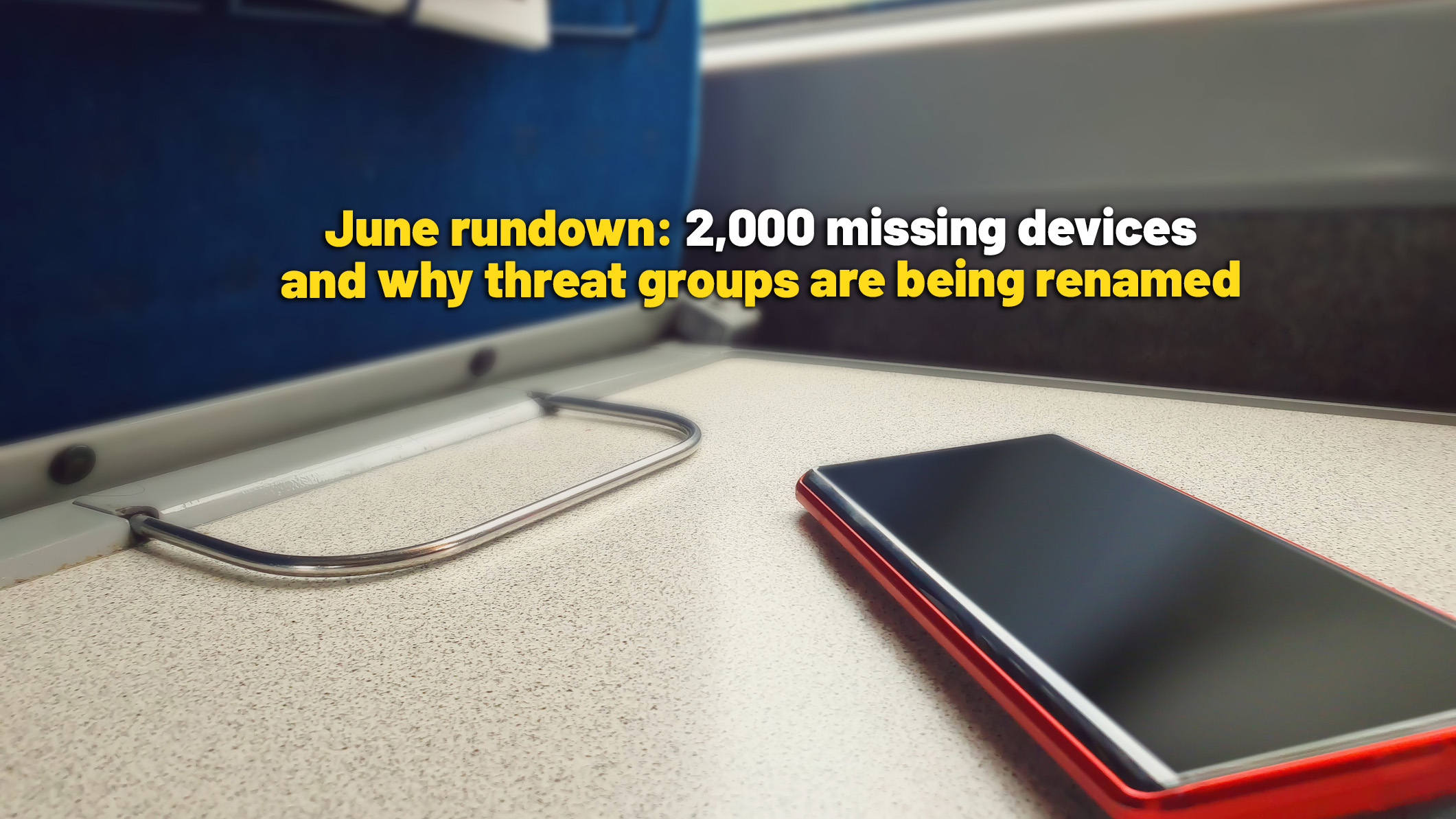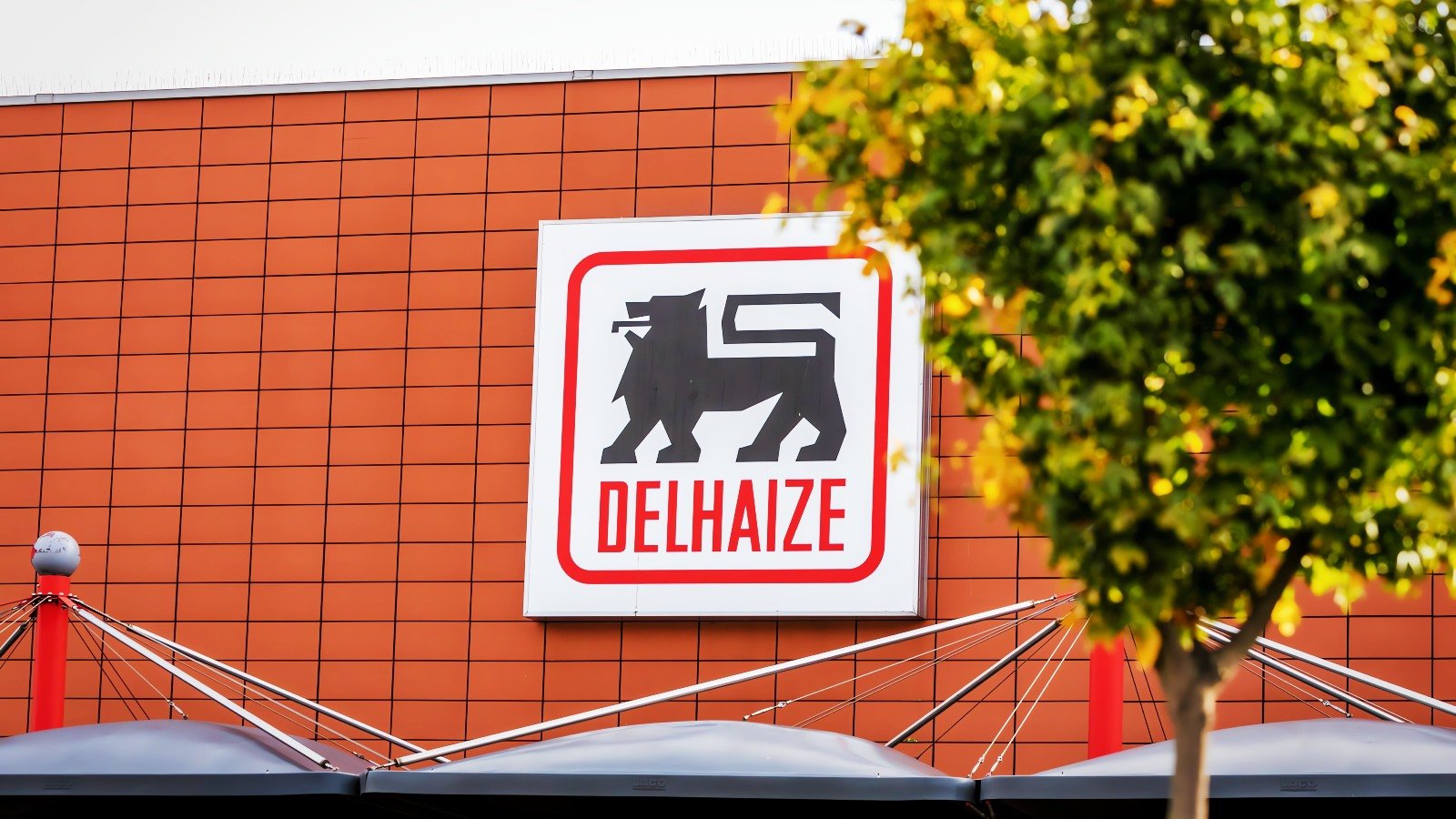Vendor Spotlight: ManageEngine

ManageEngine produces software that monitors and manages IT systems. The company has a long list of products that include tools that feature one specific technology, such as its Firewall Analyzer. Or packages that cover all systems on a site or multiple sites, such as its RMM Central and OpManager Plus products.
ManageEngine is a division of an even larger company that excels as a software provider: Zoho Corporation. However, ManageEngine provides 60 percent of Zoho’s annual turnover of $1 billion. Looking into the history of Zoho and ManageEngine, it is easy to see why the ManageEngine brand dwarfs all the rest of the multinational’s activities.
ManageEngine Founding and Background
ManageEngine was established in 2003. However, to get the full picture of how this company came about, we need to rewind a little further to 1996 and examine the creation of AdventNet, Inc. That business split in 2003, which is when the ManageEngine name came about. However, ManageEngine contained more of the existing products than the functions that were left in the rump AdventNet operation.
AdventNet started out with a network monitoring tool, based on the Simple Network Management Protocol; the modern-day successor to that package is ManageEngine OpManager. The Zoho name came about as a product line, starting with Zoho Virtual Office in 2004. With all of its products carrying the Zoho name, AdventNet, Inc. changed its name to Zoho Corporation in 2009. So, ManageEngine is actually older than its parent company.
Zoho has since generated more divisions both through executives starting up side businesses, which Zoho later bought and integrated, and by splitting off sections of one brand to create another. An example of the latter is Site24x7, a cloud-based brand of system monitoring and management tools that was split off from ManageEngine in 2006.
AdventNet has been a multinational since its inception. The company was created by Indian technologists working in the USA and their friends and relatives back in India. The US branch presented an American brand, while the development division took advantage of the lower cost base of India. So, the company operated dual HQs for most of its history until it consolidated its structure when its Board of Directors all ended up being based in India.
ManageEngine produces on-premises software because the management of Zoho decided to create the Site24x7 brand as its cloud version of ManageEngine. However, the ManageEngine team provided its tools as services available on the marketplaces of AWS and Azure. These are self-managed cloud-based systems rather than a SaaS platform. The company is now introducing SaaS versions of its most successful tools, such as Log360.
Timeline and Evolution
ManageEngine is the IT management division of Zoho Corporation. So, the history of ManageEngine is closely linked to that of Zoho.
- 1996: Originally founded as AdventNet Inc., the company began as a network management software provider, focused on the telecoms industry.
- 1997: Sridhar Vembu joined the company formed by his brother and friends as a Sales Executive.
- 1997-2002: AdventNet expands its products with more network monitoring services. Pivots its marketing to the general business community.
- April 2002: AdventNet starts to plan its new ManageEngine brand.
- January 2003: AdventNet Inc. rebranded its IT management software as ManageEngine. Early products were focused on network and server monitoring.
- 2003: ManageEngine OpManager launched – the exact date is lost in the mists of time, but the company launched OpManager 4 in December 2003.
- 2005-2008: Expansion of IT management tools portfolio to include solutions for helpdesk management, applications monitoring, and Active Directory management.
- 2010: ManageEngine launches its MSP division, producing systems for use by managed service providers, starting with ManageEngine MSP Center Lite.
- 2010-2015: Cloud solutions and security focus, addressing the rise of cloud computing by introducing cloud-based versions of its solutions, such as ServiceDesk Plus Cloud.
- 2017: GDPR compliance is integrated into ManageEngine products and processes. The company produces tools for customers to use in becoming GDPR-compliant and retaining the status.
- 2018-2021: ManageEngine strategizes AI features and IT automation in tandem with developments at Zoho, including the integration of the Zia chatbot, expanding into ChatGPT-type tools.
- 2020-2023: Consolidation of core modules, such as OpManager and Applications Manager by integrating formerly standalone specialized tools into them, reducing the number of legacy tools as the menu of modules grew.
Today, ManageEngine offers over 60 products and tools across various areas like network performance, help desk management, endpoint security, Active Directory management, cloud infrastructure, and IT analytics. With a global presence and continuous innovation, ManageEngine is a leading player in the IT management industry, catering to small businesses and large enterprises alike.
Company Ownership
ManageEngine is a brand rather than a company. It is owned by Zoho Corporation Pvt. Ltd., an Indian company. Zoho was originally called AdvanceNet, Inc. and both companies were private without any investment fund involvement.
The original creators of the company were Tony Thomas, an Indian émigré living in the United States, and the Vembu family in India. Early financing came from the savings of Vembu and Thomas, plus their family members.
Sridhar Vembu joined the company as its first Sales Executive, working without pay. This arrangement must have involved compensation in shares because Sridhar became the majority owner of the business, holding 88 percent of its shares. He was created the company’s CEO in 2000. In 2019, Sridhar was one of the richest people in India.
The shareholding of Tony Thomas and his brother Joy A. Thomas was probably removed during a split in the company in 2004 with the creation of Vtiger Systems, which went to the Thomases.
Sekar and Kumar Vembu operated the Indian arm of AdventNet at its inception and they were joined by their brother, Shailesh, in 1997. All three have a shareholding in Zoho. Their sister Radha also got involved in the company. The proportion of shares owned by each of the Vembu siblings has shifted over the years. Up until 2022, Sridhar Vembu held most of the shares. In 2023, Forbes listed Sridhar Vembu & siblings” with a wealth of $4.7 billion on its India Rich List. By 2024, mention of Sridhar’s wealth disappeared.
Radha Vembu was listed as one of the richest people in India on the Hurun India Rich List in both 2023 and 2024. In fact, in 2024, she was named by Hurun as India’s richest self-made woman with a fortune of $5.7 billion. The current Forbes World’s Real-Time Billionaires list attributes Radha Vembu with a fortune of $3.3 billion, noting that she is the largest shareholder in Zoho Corporation. Sekar Vembu is identified as the next largest holder in Zoho and the next richest member of the family, with a fortune of $2.4 billion. Sridhar, Kumar, and Shailesh do not make the list.
Key People
- Tony Thomas wrote the first software package of AdventNet and was the CEO of the company up to 2000. He ran the US arm of AdventNet with Sridhar Vembu, to whom he handed the CEO position in 2000. Thomas was the CTO of AdventNet until 2004 when the company split. Thomas then went off and formed Vtiger Systems, which is still in operation today. Thomas was CEO of Vtiger until 2008 but remained active in the company.
- Sekar Vembu was one of the founders of AdventNet in 1996 and is now the second-largest shareholder in Zoho. He and Kumar Vembu ran the Indian side of AdventNet, with Sekar becoming the Chief Technology Officer (CTO). Sekar didn’t stay with the company very long but left to create SwisSQL, a company that AdventNet bought in 2003. Sekar then started up Vembu Technologies with its product Vembu BDR, a backup, and recovery service. To this day, Sekar is the majority shareholder and CEO of Vembu Technology.
- Kumar Vembu has been with Zoho since its creation as AdventNet in 1996. He was the Chief Operations Officer (COO) of AdventNet until 2003. In 2004, Kumar set up Gofrugal Technologies, which created a SaaS ERP that caters to retail, hospitality, and distribution businesses. Zoho Corporation bought Gofrugal in 2023.
- Sridhar Vembu joined the company as an unpaid (commission-only) salesman in 1997. He became the CEO of AdventNet in 2000 and is the CEO of Zoho Corporation today. Vembu lived at Pleasanton, California, the location of Zoho’s HQ, until 2019. At that point, Vembu moved back to his home country of India and the HQ designation switched to the company’s new offices in Chennai. Vembu is a great believer of the development of the rural economy and set up a Zoho office close to his country home in the south of India, so he didn’t have to go into the company offices in the big city. Despite carrying the title of CEO, Vembu is now a teacher in a village school and has little to do with the business.
- Radha Vembu is now the majority owner of Zoho Corporation, although she wasn’t involved in the development of the business and has a relatively minor role at the company. It seems likely that Sridhar Vembu gave her his shares in 2022. Radha is in charge of the Zoho Mail team as Product Manager. Radha is currently identified as India’s richest self-made woman.
- Shailesh Kumar joined AdventNet in 1997 and seems to have a minor stake in the business. He is currently the Chief Engineer and head of Zoho Labs.
- Sreenivas Kanumuru was the first employee of AdventNet, working alongside Tony Thomas as a programmer on his development of network monitoring software. He remained close to Thomas and left AdventNet with him when he created Vtiger CRM. Thomas stood down as CEO of Vtiger in 2008 to become CTO instead, and Kanumuru took over as the CEO. This is exactly the same role switch that Thomas implemented at AdventNet in 2000. Kanumuru is the CEO of Vtiger Systems to this day.
- Rajesh Ganesan was one of the first employees of AdventNet in India. After working as a programmer in no particular role, Ganesan benefited from the expansion of the company, rising to a job that solidified into the Director of Product Management. When the ManageEngine division was created in 2002, Ganesan was put in charge of it. Today, Ganesh works at the Zoho headquarters in Chennai as the President of the ManageEngine division.
Locations
ManageEngine doesn’t have its own offices but is housed in the offices of Zoho Corporation. The worldwide headquarters of the business is in Chennai, India. The US headquarters of Zoho Corporation is located on a farm campus on the edge of Austin, Texas. The company runs 16 data centers around the world and has sales offices in major cities, such as Singapore, Sydney, Tokyo, Cape Town, and Dubai.
Target Market and Customer Base
ManageEngine targets a broad spectrum of customers across industries, primarily focusing on IT management and operations for businesses of all sizes. The company’s diverse product portfolio allows it to cater to various segments, ranging from small and medium-sized enterprises (SMEs) to large enterprises.
Target Market
Here’s a breakdown of the target market of ManageEngine:
- Small to Medium-Sized Enterprises (SMEs): Cost-effective IT management solutions. Many products have Free editions that limit the capacity of the tool, specifically for use by small businesses.
- Large Enterprises: Scalable, integrated solutions and support for hybrid infrastructures appeal to larger enterprises with sophisticated IT environments. These solutions handle large volumes of data, user bases, and multi-site networks.
- Managed Service Providers (MSPs): Multi-tenant versions of standard ManageEngine systems, plus new tools that were specifically written for MSPs. Remote monitoring, IT service management, and ticketing allow MSPs to serve multiple clients.
- Government and Public Sector: Tools that provide secure, compliant IT management solutions help government agencies maintain their networks, systems, and security. Data security products are particularly important in this sector.
- Educational Institutions: Universities, colleges, and schools need ManageEngine’s tools for managing large-scale IT infrastructure. Solutions manage user access, ensure network uptime, and maintain security without stretching IT budgets.
- Healthcare: Strict security, compliance, and uptime to protect patient data and ensure smooth operations are vital in this sector. ManageEngine provides systems for the security of sensitive healthcare data, compliance, and network management.
- Finance and Banking: Management of security, compliance, and networks. Log360 and Password Manager Pro are popular products used in the financial sector.
Customer Base
ManageEngine serves a global customer base across North America, Europe, Asia-Pacific, and the Middle East. It is widely used in regions with high demand for IT management solutions due to increasing digital transformation efforts.
Key Industries:
- Information Technology
- Government
- Healthcare
- Education
- Finance
- Retail
ManageEngine has over 180,000 customers globally, ranging from small businesses to Fortune 500 companies. Notable customers include:
- Barclays Bank
- Siemens
- NASA
- Sony
- Intel
- UNICEF
ManageEngine’s wide range of solutions and customizable offerings allow it to address various industry-specific IT needs, making it a versatile provider across multiple sectors.
ManageEngine’s Product Suite
ManageEngine offers a wide-ranging product suite that covers various aspects of IT management, designed to meet the needs of businesses of all sizes.
1. IT Service Management (ITSM)
- ServiceDesk Plus: An IT asset management and help desk package for incident management, problem management, change management, and service catalog.
- SupportCenter Plus: A customer support software that allows businesses to manage customer tickets, accounts, and contracts efficiently.
2. IT Operations Management (ITOM)
- OpManager: A network monitoring software for managing network performance, devices, and bandwidth in real-time.
- Applications Manager: Monitors the performance of applications, databases, and cloud services, offering detailed performance insights.
- NetFlow Analyzer: A bandwidth monitoring tool that helps track and analyze network traffic.
- Network Configuration Manager: Manages and monitors network device configurations to ensure compliance and security.
3. Unified Endpoint Management (UEM) and Security
- Desktop Central: A UEM solution for managing desktops, laptops, servers, and mobile devices across multiple operating systems.
- Patch Manager Plus: A patch management software for automating patch deployment across Windows, macOS, and Linux devices.
- Mobile Device Manager Plus: Allows organizations to manage, secure, and monitor mobile devices (iOS, Android, Windows) in the workplace.
- OS Deployer: A solution for automating OS deployment and managing OS images across an enterprise.
4. Active Directory (AD) Management and Auditing
- ADManager Plus: Provides AD management and reporting for user accounts, groups, and organizational units (OUs), with admin automation.
- ADAudit Plus: A real-time auditing solution that tracks changes and activities in Active Directory, file servers, and Windows servers.
- ADSelfService Plus: Allows users to reset passwords, unlock accounts, and update directory information without IT support.
5. Security Information and Event Management (SIEM)
- Log360: An integrated SIEM solution combining log management and active directory auditing to detect security threats and ensure compliance.
- EventLog Analyzer: A log management tool that collects, analyzes, and monitors logs for threat detection and regulatory compliance.
- DataSecurity Plus: Provides visibility into file access, changes, and sensitive data movements to prevent data breaches.
6. IT Analytics
Analytics Plus: A business intelligence and IT analytics solution that helps generate custom reports and dashboards, integrating data from various IT management tools.
7. Identity and Access Management (IAM)
- Password Manager Pro: A privileged password management tool that helps securely store, manage, and audit privileged accounts and passwords.
- Key Manager Plus: A key management solution that automates the management of SSH keys and SSL certificates.
8. Cloud Management
- SaaS Manager Plus: A monitoring tool for cloud SaaS packages and services that looks at performance and cost.
- CloudSpend: A cloud cost management tool that helps businesses manage and optimize spending on AWS and other cloud platforms.
9. Unified IT Management
- OpManager Plus: Combines network monitoring, bandwidth monitoring, firewall management, and configuration management into a unified solution.
- RMM Central: A remote monitoring and management tool for MSPs to manage client networks, servers, and endpoints.
10. IT Asset Management (ITAM)
AssetExplorer: A web-based tool that helps manage and track all IT assets, showing software licenses, hardware details, and purchase orders.
ManageEngine OpManager is a network and server monitoring tool designed to help IT teams monitor and manage their network infrastructure efficiently.
Key Features:
- Network Discovery: Automatically discovers network devices and servers, which simplifies the setup process.
- System documentation: Automatically generates a hardware inventory and a network topology map.
- Network Monitoring: Provides real-time visibility into the performance and availability of network devices, servers, and applications.
- Performance Management: Monitors key performance metrics such as bandwidth usage, CPU load, and memory usage.
- Alerting and Notifications: Configures alerts based on performance thresholds and other criteria. Supports multiple notification methods, including email, SMS, and integration with other ITSM tools.
- API Support: Provides APIs for custom integrations and automation.
Pros:
- Troubleshooting and Diagnostics: Provides tools for diagnosing and resolving performance issues.
- User-Friendly Interface: Features an intuitive interface that simplifies network management and visualization.
- Customizable Dashboards and Reports: Users can tailor dashboards and reports to meet specific needs and preferences.
- Scalability: Capable of scaling to accommodate growing networks and expanding IT infrastructure.
- Reports and Analytics: Pre-built reports for network performance, availability, and health. Users can create custom reports based on specific needs.
Cons:
- Complex Setup for Large Networks: Initial setup and configuration can be complex, especially for large and intricate network environments.
- Resource Intensive: May require significant system resources, which can impact performance on lower-end hardware.
OpManager offers a broad range of capabilities for monitoring and managing network infrastructure. While it excels in performance and flexibility, potential users should be aware of the complexities associated with its setup and the resource demands of the software.
Other Notable Products
1. Applications Manager
ManageEngine Applications Manager helps organizations ensure the availability and performance of servers, databases, cloud environments, virtual infrastructure, and web services. Key features include real-time monitoring, in-depth performance analytics, automatic discovery of applications, and root cause analysis. The customizable dashboards and detailed reports give insights into application health, response times, memory usage, and transaction performance.
The package will integrate with other ManageEngine tools, creating a unified IT management ecosystem. However, for users new to APM solutions or those with less technical expertise, the product’s extensive feature set can be overwhelming, leading to a steep learning curve. Despite these challenges, Applications Manager is a solid choice for businesses seeking a reliable, all-in-one APM solution.
2. ManageEngine ADAudit Plus
ManageEngine ADAudit Plus is an administration and reporting solution that helps organizations monitor and secure their AD environment. It provides real-time auditing, tracking, and alerting of critical changes across AD, Azure AD, and Windows Server. ADAudit Plus allows IT teams to monitor user activities, group policy changes, login patterns, and more, helping detect suspicious activities. Its compliance reports simplify adherence to regulatory requirements like HIPAA, GDPR, and SOX.
ADAudit Plus provides more than 200 out-of-the-box reports that illuminate AD changes, user behaviors, and login activities. The tool integrates with AD environments, and it provides real-time alerts for threat detection. This package is a valuable solution for organizations that need to enhance security, ensure compliance, and maintain a comprehensive audit trail of AD activities.
Major Competitors
Here are some major competitors to ManageEngine:
- SolarWinds A leading provider of network, systems, and IT management tools, offering comprehensive monitoring and performance management for hybrid IT environments, known for its scalability and rich feature set.
- Nagios An open-source network monitoring tool that provides real-time monitoring of systems, networks, and infrastructure with customizable plugins and dashboards, ideal for organizations looking for a flexible solution.
- Datadog A cloud-based infrastructure monitoring and APM platform that provides end-to-end visibility into application performance, logs, and metrics, widely used for its scalability in cloud-native environments.
- Paessler PRTG A versatile network monitoring tool offering an all-in-one solution to monitor traffic, bandwidth, and device health. It excels in ease of use and real-time reporting for medium-sized enterprises.
- Zabbix An open-source monitoring solution that covers networks, servers, and cloud services. It provides highly customizable monitoring options, ideal for organizations seeking cost-effective and flexible control.
- Splunk A powerful data analytics platform that focuses on IT operations management and security, providing robust log management, monitoring, and incident response capabilities for large-scale enterprise environments.
- Microsoft System Center A suite of tools for managing Windows environments, offering capabilities for network management, configuration, and application monitoring, favored by organizations heavily invested in the Microsoft ecosystem.
- BMC Software A comprehensive IT service management platform offering tools for monitoring, automation, and IT operations. Its strength lies in providing enterprise-level solutions for infrastructure and cloud management.
- New Relic A cloud-based observability platform that delivers real-time insights into application performance, infrastructure, and user experiences, ideal for DevOps teams focused on optimizing software performance and delivery.
- IBM Tivoli A suite of enterprise-level monitoring tools for managing networks, applications, and storage. Tivoli is known for its scalability and customization options, suited for complex, large-scale IT environments.
Conclusion
Post-pandemic, ManageEngine focused on helping organizations adapt to the remote work culture. It enhanced its cloud offerings and strengthened remote IT management tools. It expanded its product suite with new capabilities around endpoint security, zero-trust models, and advanced threat management, responding to the increased cybersecurity risks.
Source link








